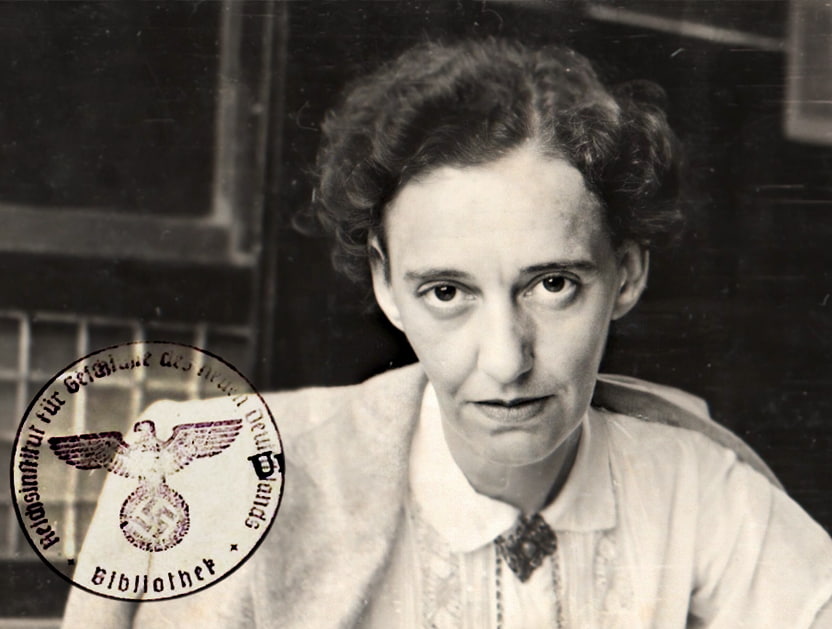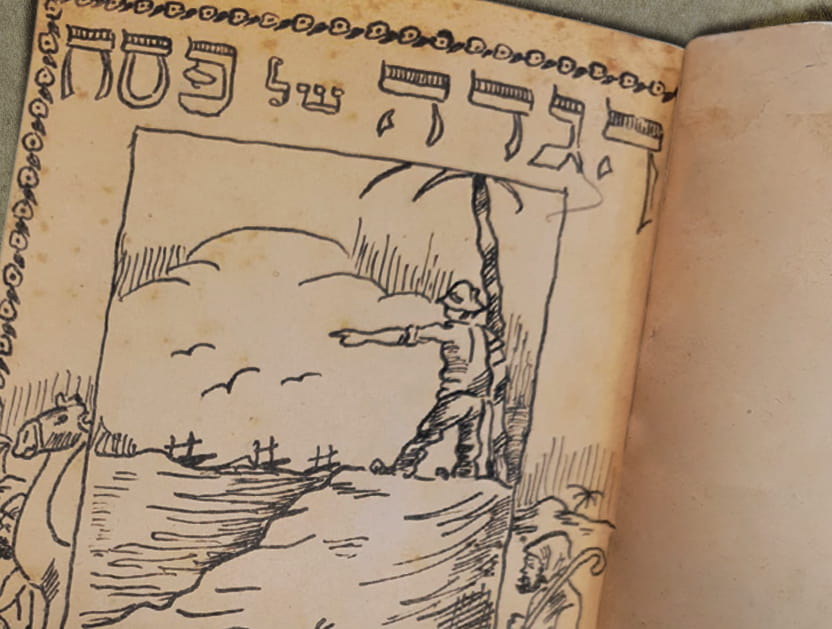The Danubian lands between the Black, Aegean and Adriatic Seas
להגדלת הטקסט להקטנת הטקסט- ספר
Proceedings of the Fifth International Congress on Black Sea Antiquities (Belgrade - 17-21 September 2013). The theme of the congress included archaeological, historical, linguistic, anthropological, geographical and other investigations across the huge area through which the Argonauts passed in seeking to return from Colchis.
| כותר |
The Danubian lands between the Black, Aegean and Adriatic Seas : 7th century BC-10th century AD / edited by Gocha R. Tsetskhladze, Alexandru Avram, and James Hargrave. |
|---|---|
| מוציא לאור |
Oxford : Archaeopress |
| שנה |
[2015] |
| הערות |
In English with some papers in French or German. |
| הערת תוכן ותקציר |
Cover -- Title Page -- Copyright Page -- Contents -- Message from the President of the International Organising Committee, Prof. Sir John Boardman -- Welcome by the Secretary-General -- List of Illustrations and Tables -- List of Abbreviations -- Opening Lecture -- Black Sea cultures and peoples -- Fig. 1: Map of the Argonauts' route. -- Miroslava Mirković -- Fig. 2: The mythological ship 'Argo'. -- Fig. 3: The Danube estuary. -- Fig. 4: The Dacian Sarmizegetusa. -- Fig. 5: The Danube: Djerdap Canyon/Iron Gates. -- Fig. 6: The Danube at the entrance to the Canyon, in winter. -- Fig. 7: Kalemegdan in Belgrade in front of the Sava's merging into the Danube. -- Fig. 8: Serbian research ship 'Argus'. -- Gocha R. Tsetskhladze -- Greeks, locals and others around the Black Sea and its hinterland: recent developments -- Fig. 1: Map of the Black Sea showing major Greek colonies and local peoples. -- Fig. 2: Plan of temple of Cybele from Dionysopolis (after Lazarenko et al. 2010, 45). 1. Bases -- 2. Staircase -- 3. Probable foundations of an older building -- 4. Toichobate in the naos -- 5. Pronaos -- 6. Doorstep of one row of stones -- 7. Steps in the pronaos -- 8 -- Fig. 3: Temple of Cybele from Dionysopolis, details (after Lazarenko et al. 2010, 46). -- Fig. 4: Site plan of Nokalakevi/Archaeopolis (after Everill 2014, xii). -- Fig. 6: Map of northern Anatolia (after Summerer 2014, 190, fig. 1). -- Fig. 10: Plan of the temple at Tios (after Baran 2013, 10, fig. 7). -- Fig. 11: East Greek pottery from Tios (after Atasoy and Erpehlivan 2012, 2, fig. 2). -- Fig. 7: Acropolis of Tios (photograph courtesy of S. Atasoy). -- Fig. 8: Temple at Tios, view from the north-east (photograph courtesy of S. Atasoy). -- Fig. 9: Temple at Tios, view from the west (photograph courtesy of S. Atasoy). Fig. 12: Attic pottery from Tios (photograph courtesy of S. Atasoy). -- Fig. 13: Attic pottery from Tios (photograph courtesy of S. Atasoy). -- Fig. 14: Attic pottery from Tios (photograph courtesy of S. Atasoy). -- Fig. 15: Ereğli E shipwreck, Chersonesian amphora (photograph courtesy of the Ocean Exploration Trust). -- Fig. 16: Ereğli E shipwreck, kantharos and fragment of wall of amphora (photograph courtesy of the Ocean Exploration Trust). -- Fig. 17: Rescue excavation in Kurupelit (Amisos) (after Summerer 2014, 202, fig. 14). -- Fig. 18: Rescue excavation in Kurupelit (Amisos), terracotta figurine of Cybele (after Dönmez 2010, 547, fig. 42 -- photograph courtesy of Ş. Dönmez). -- Fig. 19: Rescue excavation in Kurupelit (Amisos), dedication to Kubaba and terracotta figurine of Cybele (after Akyüz 2013, 49). -- Fig. 20: Rescue excavation in Kurupelit (Amisos), pottery finds (after Dönmez 2010, 548, fig. 43 -- photograph courtesy of Ş. Dönmez). -- Fig. 21: Rescue excavation in Kurupelit (Amisos), Attic pottery (after Akyüz 2013, 48). -- Fig. 22: Rescue excavation in Kurupelit (Amisos), local pottery (after Dönmez 2010, 548, fig. 44 -- photograph courtesy of Ş. Dönmez). -- Fig. 23: Rescue excavation in the suburbs of Amisos (Çakalca-Karadoğan), grave stelae (after Akyüz 2013, 44). -- Fig. 24: Map showing location of the tumulus at the village of Krasnyi (after Shevchenko 2013, 101, fig. 1). -- Fig. 25: Kurgan at the village of Krasnyi, large oinochoe (after Shevchenko 2013, 113, fig. 9). -- Fig. 26: Kurgan at the village of Krasnyi, large oinochoe, detail (after Shevchenko 2013, 114, fig. 10). -- Fig. 27: Kurgan at the village of Krasnyi, smaller oinochoe (after Shevchenko 2013, 111, fig. 8). Fig. 28: Map of the northern Black Sea littoral and the Kuban region showing settlements and tombs which have yielded East Greek pottery of the last third of the 7th century BC. Not to scale (adopted from Tsetskhladze 2012a, 318). 1. Nemirov/Nemirovskoe -- -- Fig. 29: Fragment of wall of oinochoe with graffito, Berezan, ca. 625-600 BC (after Borisfen-Berezan' 2005, 136, no. 256). -- Fig. 30: Anatolian pottery from Berezan (after Solovyov 2013, 65). 1-2. Pottery with monochrome painting -- 3-4, 6-7. Pottery with bichrome painting -- 5. Pottery with painting -- 8. Fragment of zoomorphic vessel. -- Fig. 31: Anatolian pottery from Berezan (after Solovyov 2013, 64). 1-2. Pottery in the Black-on-Red style -- 3-4. Pottery in Red-and-Buff style. -- Fig. 32: Map of the Cimmerian Bosporus showing modern Taman Peninsula. Not to scale. -- Fig. 33: Reconstruction of the ancient Taman Peninsula as three islands (after Tsetskhladze 2007a, 552, fig. 2). -- Fig. 34: Reconstruction of the palaeogeographical situation of the Taman Peninsula at the time of Greek colonisation (after Zhuravlev et al. 2009, 122, fig. 1). -- Fig. 35: Vestnik-1, plan of stone building, possibly temple dedicated to Apollo (Chevelev et al. 2011, 409, fig. 1). -- Feasting and diplomacy in colonial behaviour in the northern Black Sea -- Ivy Faulkner -- Luigi Gallo -- The Black Sea area in Xenophon's Anabasis -- Hegemony and political instability in the Black Sea and Hellespont after the Theban expedition to Byzantium in 364 BC1 -- José Vela Tejada -- Fig. 1: Map of mainland Greece and the Aegean showing alliances, battles and Epaminondas' voyage. -- Femmes et pouvoir chez les peuples des steppes eurasiatiques* -- Marta Oller -- Stefania Gallotta -- The Bosporus after the Spartocid kings -- Leuce Island as a part of the Pontic contact zone: constructing a sacred Topos -- Ruja Popova. Jan G. de Boer -- Sinope and Colchis: colonisation, or a Greek population in 'Poleis Barbaron'? -- Fig. 1: The walls of Sinop (after a 19th-century engraving by Jules Laurens). -- Fig. 2: The south-eastern Black Sea coast with several Iron Age sites (after Dönmez 2007, 151). -- Fig. 3: The Greek settlements in the Black Sea area (after Tsetskhladze 1998a, 23). -- Fig. 4: Colchian variant A type amphorae (after Tsetskhladze and Vnukov 1992, figs. 3-4). -- Greek colonies and the southern Black Sea hinterland: looking closer into a long, complex and multidimensional relationship -- Manolis Manoledakis -- Fig. 1: Map of the Southern Black Sea with the most important local peoples (created by author). -- Fig. 2: East Greek pottery from Akalan, ca. 600 BC (after Cummer 1976). -- Fig. 3: Clay relief revetment from Pazarli, 6th century BC (after Boardman 1999, 92, fig. 103). -- Fig. 5: Sites of the southern Black Sea hinterland that have yielded Greek finds (created by author). -- Maya Vassileva -- Phrygia and the southern Black Sea littoral -- Alina Dimitrova -- Perception and the political approach to foreigners of the West Pontic Greek colonies during the Hellenistic period1 -- Alik Gabelia -- Fig. 1: Sukhum Bay. -- The Greek colonisation of Abkhazia in the light of new archaeological discoveries: the palaeogeographic, ecological and demographic situation in Sukhum Bay -- Fig. 2: Fortifications of Sebastopolis (after Voronov 1980, 15). -- New data on the dynamics of relations between Greeks and Barbarians at the mouth of the Tanais river in the final stage of Scythian history (5th-3rd centuries BC) -- Viktor P. Kopylov -- Fig. 1: Greek cult complex, Elizavetovskoe. -- Fig. 2: Image of Demeter on a silver plate. -- Fig. 3: Terracotta statuettes out of the closed complex (room 116), Elizavetovskoe: (a) Dionysus -- (b) Cybele -- (c) Attis. (d) Ciboria. -- Fig. 4: Greek gravestones, Elizavetovskoe. -- Greek colonisation of the European Bosporus -- Viktor Zinko and Elena Zinko -- Fig. 1: Greek colonies of the 6th century BC in the European Bosporus (topographical base: 1862 map). -- Fig. 2: Reconstruction of semi-dugouts (after Kryzhitskii 1982). -- Fig. 3: Semi-dugout no. 1, the view from the south. -- Fig. 4: Craft quarter of Panticapaeum at the end of the 6th century-early 5th century BC (drawing by M.V. Lvova). -- Fig. 5: Reconstruction and plan of the houses at the western walls of Tyritake (after Kryzhitskii 1982, 59). -- Fig. 6: Reconstruction of a quarter in the central part of Tyritake. -- Fig. 7: Late Archaic buildings in the central part of Tyritake. -- Fig. 8: Buildings of the last third of the 6th century BC under the western ramparts of Tyritake. -- Fig. 10: Attic black-glazed bowls from sacrificial pits. -- Fig. 9: Sacrificial pit with bones of four horses. -- Ioannis K. Xydopoulos -- The Cimmerians: their origins, movements and their difficulties -- Alexander V. Podossinov -- Verbindung zwischen dem Schwarzen Meer und der Adriatik durch Ozean und/oder Donau im Weltbild der archaischen Griechen -- Anca Dan -- Between the Euxine and the Adriatic Seas: ancient representations of the Ister (Danube) and the Haemus (Balkan Mountains) as frames of modern south-eastern Europe1 -- Fig. 1: Cartographic sketch of the Balkan Peninsula, with toponyms and general indication of the Via Egnatia and Via militaris/Via diagonalis. -- Fig. 2: Tabula Peutingeriana, reproduction after Konrad Miller (1887-88, segmenta IV-VIII: http://www.hs-augsburg.de/~harsch/Chronologia/Lspost03/Tabula/tab_pe00.html): the Danube and the ranges of the Carpathians (Alpes Bastarnice), Haemus and Rhodope Fig. 3: Ptolemy, Geography, Tabula IX, Rome, 1478 (Margarita Samourkas Collection, cat. no. 1236, cf. Tolias 2012, 32-33). |
| היקף החומר |
1 online resource (594 pages) : illustrations (some color), maps (some color) |
| שפה |
אנגלית |
| שנת זכויות יוצרים |
©2015 |
| מספר מערכת |
997010706251205171 |
תצוגת MARC
יודעים עוד על הפריט? זיהיתם טעות?

 כניסה עם גוגל
כניסה עם גוגל
 כניסה עם פייסבוק
כניסה עם פייסבוק



